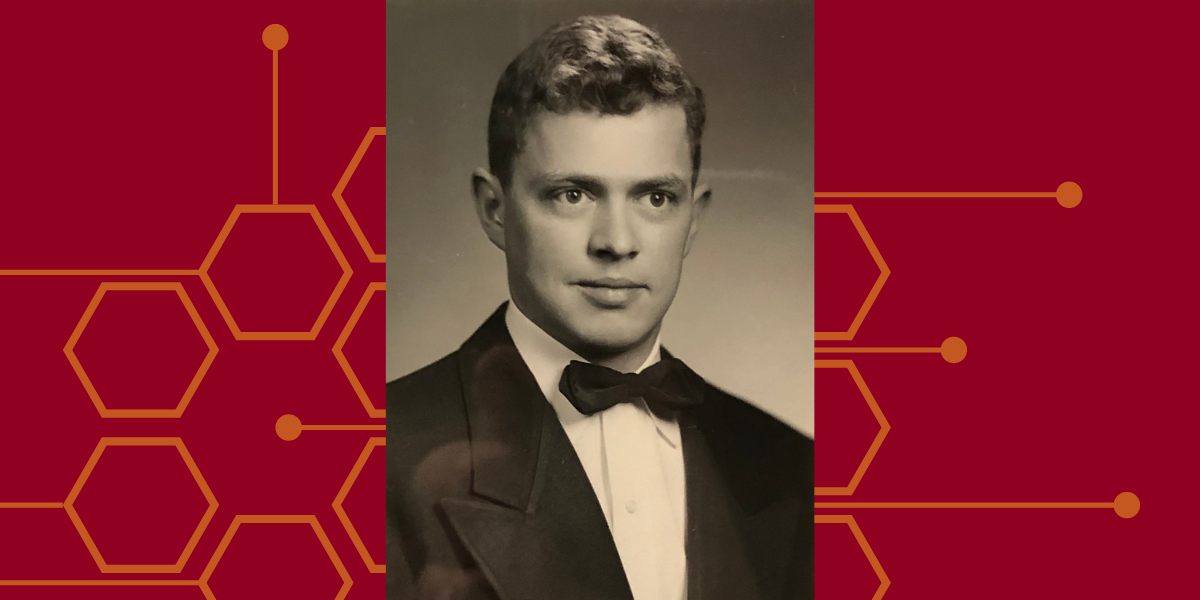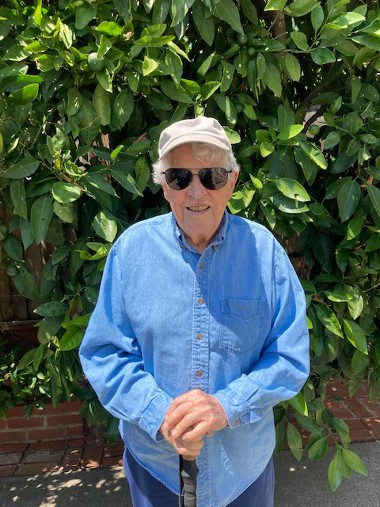Historical perspective
Donald Mason, ’52 DVM, the last living member of the Class of 1952, reflects on a lifetime of medical service

Donald Mason, ’52 DVM, the last living member of the Class of 1952, reflects on a lifetime of medical service
Donald Mason, '52 DVM, MD, poses for his class photo.
This year marks the 70th anniversary of the University of Minnesota College of Veterinary Medicine’s second class of graduates. Donald Mason Sr., ’52 DVM, MD, was among them, a World War ll veteran ready to start his veterinary career.
Now, the soon to be 95 year old is the class’ lone survivor and whose full life and two careers are reflected in those seven decades between.
Much has changed since Mason walked the halls of the College, then known as the School of Veterinary Medicine, which welcomed its first class of 24 students in 1947 and was in the process of constructing its core buildings during his attendance.
“The most notable change in recent years is that the student body is predominately women whereas we had just two,” he recalls. “They were great classmates.”
Mason also fondly remembers the instructors who prepared him for the veterinary profession.

"I particularly remember anatomy professor Ralph Kitchell," he says. "He was truly a gifted teacher, but they were all great and left me with many lasting good memories."
While many of his classmates sought positions in small town mixed-animal practices, Mason’s entry into the veterinary profession took a detour when he was recalled to serve in the Korean War.
Once stateside, he inquired about working for the United States Public Health Service (USPHS). After passing physical and written exams, Mason was accepted and spent five years working for the service.
“I was assigned to the Q Fever Laboratory in Los Angeles to help evaluate an experimental bovine vaccine,” he says. “The post-war population surge brought a large number of people to live in proximity to pre-existing concentrated dairy herds. The goal was to prevent the disease in cattle by vaccination.”
Mason continued working in public health, this time in Texas where he investigated possible origins of rabies in bats and major outbreaks of psittacosis in turkey flocks and poultry processing plants. His poultry work led to reassignment to the George William Hooper Foundation at the University of California, San Francisco (UCSF) Medical Center to work under its director, Dr. K.F. Meyer, a world authority on psittacosis and other zoonotic diseases.
The move also brought an unexpected turn of fortune in Mason’s personal life.
“While at Hooper I was hospitalized with psittacosis and met the love of my life, Elaine Wichelman, a 1952 graduate from the U of Minnesota School of Nursing,” he says. “A year, later Don. Jr. was born.”
Following the birth of his son, Mason says he was struck with the crazy notion to go to Stanford Medical School, which he was admitted to in 1957 and graduated from in 1961.
His passion for public health continued and he rejoined USPHS, completing an internship and residency in internal medicine at the USPHS Hospital in San Francisco. He remained on staff after his residency and later became the chief of medicine and the director of the internal medicine residency program. He also served on the medical staff at UCSF.
Mason retired from the USPHS in 1976 and went into private practice for 18 years in Marin County in California.
His wife Elaine has since passed, but Mason’s two children, six grandchildren, and five great-grandchildren all live nearby. His son Don Jr. followed in his footsteps, graduating from Standford with his medical doctorate.
Though his time in veterinary medicine was brief, Mason knows one thing to be true of both the animal and human fields in the decades since his 1952 graduation.
“Medicine has changed a lot,” he says.